22 discoveries this year changed our understanding of how animals communicate, compete, and defend themselves
Aylin Woodward

- As scientists researched the evolution and behavior of animal species over the last year, our understanding of how many creatures communicate, compete, and defend themselves has changed.
- New discoveries offered eye-raising insights into the behavior of sharks, penguins, dogs, and insects, among other species.
- Researchers discovered this year, for example, that platypuses glow in the dark.
Even amid a pandemic, scientists across the globe have continued to make mind-boggling discoveries this year.
When it comes to findings about animals' adaptations and behaviors, one study revealed that dogs age faster than we thought relative to humans. Researchers also discovered that octopuses taste by touching objects, and engineers figured out how the diabolical ironclad beetle can get run over by a car without being crushed.
These findings and others offer unprecedented insight into how a variety of animal species hunt, survive, and thrive in a changing world.
Here are some of the most eye-raising animal discoveries of 2020.
In October, researchers figured out how we can get cats to trust us more.

One of the best ways to build a rapport with your cat, a study showed, is to narrow your eyes and blink slowly at them.
To cats, slow blinking is a form of smiling, and solicits happy, positive emotions. The researchers found that a cat will respond to a human's slow blink with a slow blink of their own, and is more likely to approach an unfamiliar person who is slow blinking at them.
Don't worry, dog people: It was a watershed year for pup-related research. One study found that we've probably been estimating our dog's human age equivalent incorrectly.

A common rule of thumb for dog owners had been that one year for dogs is equivalent to seven human years.
But the new research showed that young puppies age much faster than young humans do, so that simple one-to-seven year ratio is wrong. A 1-year-old dog is more "like a 30-year-old human," one of the study authors said.
But as dogs get older, they age more slowly. So the researchers found that a 12-year-old labrador would be the equivalent of 70 in human years.
Dogs prefer to look at each other, rather than at their owners, an October study found.

A dog's brain isn't wired to appreciate the beauty of its owner's face, the research showed.
Although humans rely heavily on faces to gather information and social cues — and have specialized brain areas that activate when we look at faces — dogs rely more on body language and vocal cues instead.
Researchers did discover some neurological similarities between dogs and humans, though: One study suggests our pets process human speech in a way similar to people.

When humans hear someone speak, our brains first parse out a speaker's underlying tone, then process the meaning of what we've heard. Dogs' brains divvy up the task of speech processing in the same way, according to research published in August.
Our pets process "simpler, emotionally loaded cues" like tone first and then "more complex, learnt cues," according to a press release about the study.
Dogs have an uncanny ability to find their way home, and scientists may have finally deduced how it works.

Typically, canines use their sense of smell to navigate. But that's not the only tool at their disposal: Hunting dogs like terriers and dachshunds can also orient themselves using Earth's magnetic field, according to a June study.
Birds, dolphins, and some whales may also use this same sixth sense, called magnetoreception, to plot their migrations.
Sometimes, though, following the magnetic field can lead migrating animals astray.
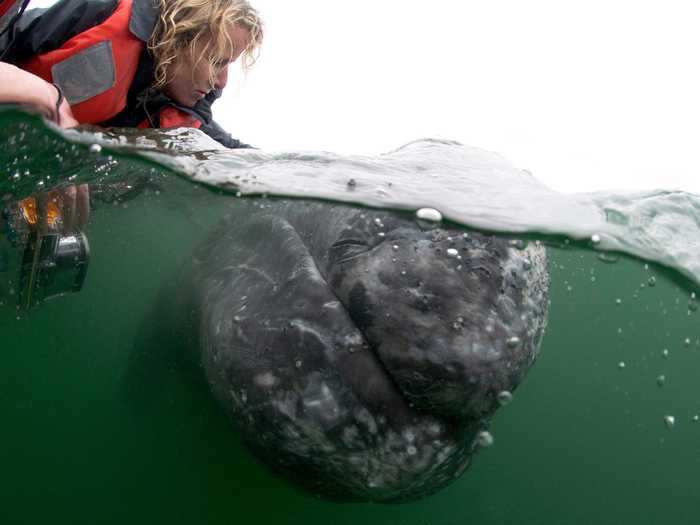
A February study found that during solar storms — which cause temporary disturbances in the magnetic field — gray whales are more likely to get stranded on shore.
The disturbances affect gray whales' internal compasses, preventing them from navigating accurately.
"We think whales are getting stranded more often during solar storms because they've gone blind," Jesse Granger, lead author of the study, previously told Business Insider. "The impacts of these storms on Earth could be shutting down the animals' ability to sense the magnetic field."
More than 200 gray whales got stranded or washed up dead onshore in the northeastern Pacific Ocean in 2019.
One particular species of whale, Cuvier's beaked whale, made headlines this year after scientists observed it stay underwater for 3 hours and 42 minutes.
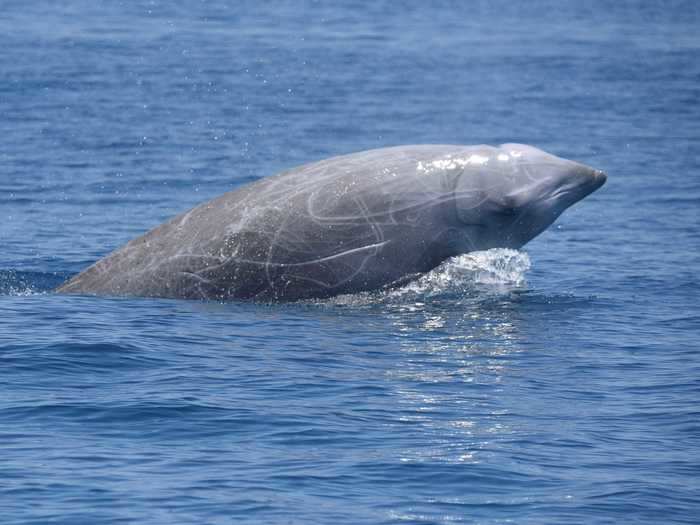
That's the longest any animal has ever been known to hold its breath. According to the researchers, the record dive is almost seven times longer than a whale of this size should be able to do without oxygen.
Cuvier's beaked whales are among the ocean's deepest and longest divers, reaching depths of up to 10,000 feet (nearly 2 miles).
Another record-holding swimmer, the Greenland shark, is the longest-living vertebrate on the planet. Genetic analysis revealed new details about these creatures this year.
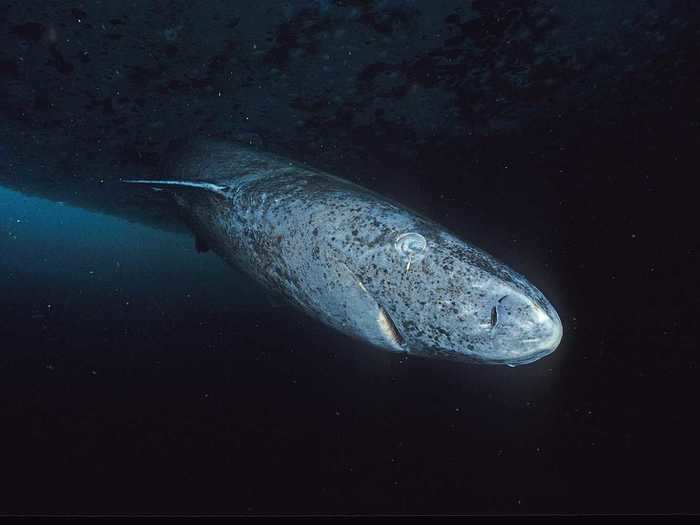
Greenland sharks are found in north Atlantic and Arctic waters and can live for up to 400 years.
An August study determined via genetic analysis that there are two geographically separate populations of Greenland sharks. One group swims near Canada's Baffin Basin, above the Arctic Circle, while the other occupies waters of the north Atlantic Ocean between Nova Scotia and Svalbard, near Norway.
Waters in the northern Atlantic may be getting more crowded with sharks as waters warm.
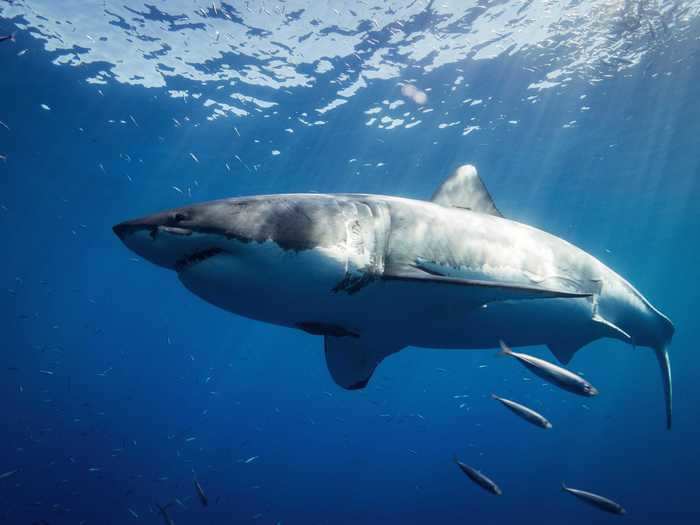
As shark species like great whites expand their ranges, that could mean more fin sightings — and possibly attacks.
Great whites will be "found more commonly in Maine waters in the years ahead," George Burgess, former director of the Florida Program for Shark Research, told Business Insider in June.
The predators are proliferating in Massachusetts too, which is likely a consequence of ballooning populations of grey and harbor seals off the coast of Cape Cod, Burgess said.
Great whites are the biggest carnivorous sharks alive today, but research has shown how small they are in comparison to megalodons.
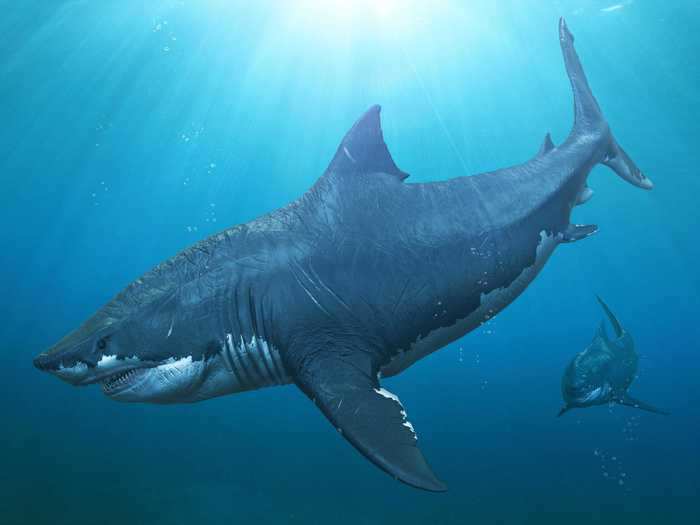
A September study found that megalodons, a type of prehistoric shark, reached lengths of 52 feet. That research also showed that a 52-foot megalodon had a head and tail 13 feet long and a dorsal fin equal to the height of an average woman.
One analysis suggested these extinct predators reached such gargantuan sizes by cannibalizing each other in the womb.
A jellyfish relative broke a record in 2020, becoming the longest animal ever seen.
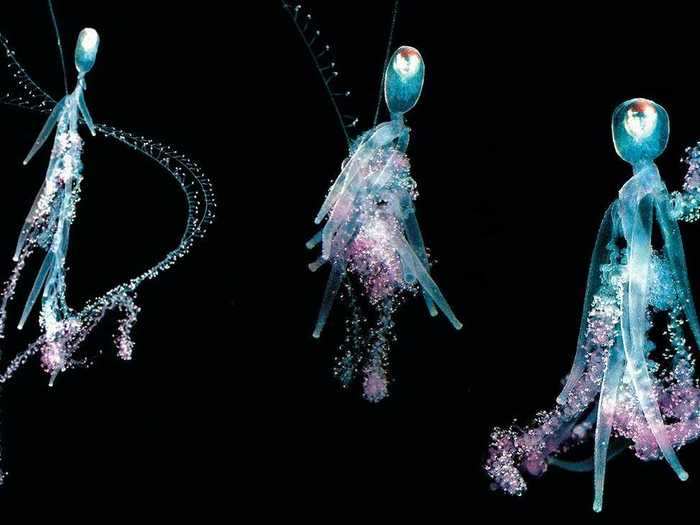
In April, scientists discovered a 150-foot-long siphonophore off the coast of western Australia — the longest creature ever observed.
Siphonophores are predators that feed as jellyfish do, dangling long, stinging tentacles that prey swim into.
That wasn't the only rare tentacled creature caught on camera in Australia this year. Researchers also spotted five bigfin squid.
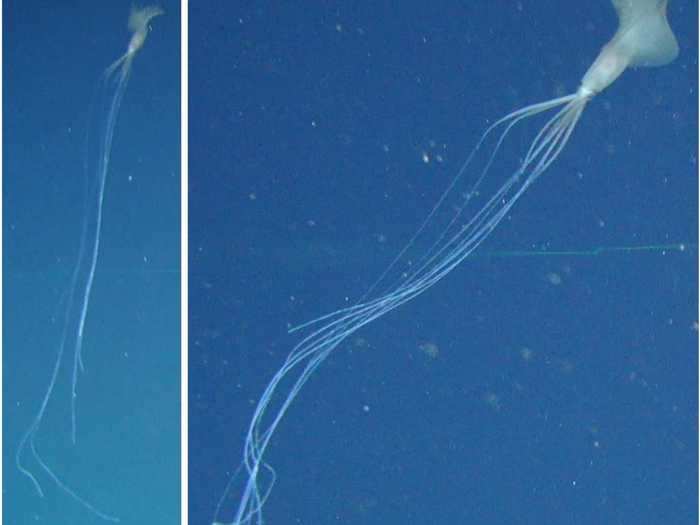
Researchers announced in November that they'd seen the bigfin squid off the coast of Adelaide. The creatures are rarely captured on camera; they'd only been spotted a dozen times since the 1980s, and had never been seen in Australian waters before.
A bigfin squid's body is only 6 inches long, but its tentacles stretch 6 feet.
Scientists also discovered that platypus fur glows greenish-blue under ultraviolet light.

The discovery may indicate that mammals evolved biofluorescent fur more than 150 million years ago. This glowing fur could help nocturnal mammals camouflage, or it could play a role in mating rituals, according to new research.
Hummingbirds, researchers recently discovered, can see ultraviolet light.
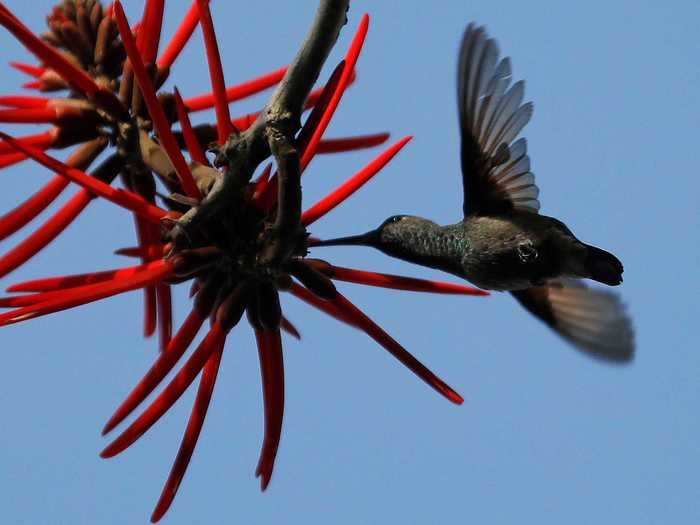
Broad-tailed hummingbirds can pick up on colors in the ultra-violet spectrum that are imperceptible to the human eye, a June study showed. This expanded range of vision helps the animals identify food sources.
Another impressive creature, diabolical ironclad beetle, can get squished under 39,000 times its body weight and make it out alive. In October, scientists discovered how its body does that.
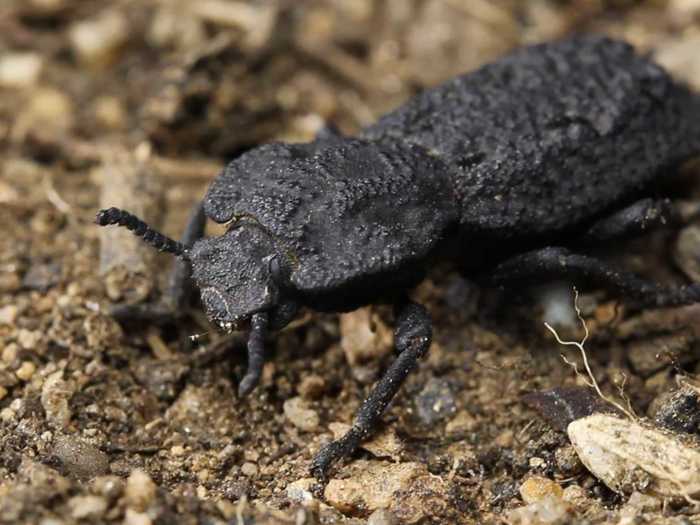
Imagine a 200-pound man being crushed by the weight of nearly two space shuttles and coming out unscathed. That's about how indestructible the diabolical ironclad beetle is.
The beetle has hardened casings on each wing that interlock and support its exoskeleton, which enables it to get run over by a car and survive, research showed. Scientists are exploring how to mimic the design of the beetle's exoskeleton to build better planes and armored vehicles.
Researchers also figured out why locusts swarm, which could help them stop the insects from destroying crops.

A study published in August pinpointed a chemical scent that triggers locusts to gather together. The study authors suggested using that same pheromone to lure locusts into areas in which they can then be killed en masse in order to save crops.
Insects can get deadly infections just like other creatures. One parasitic fungus in particular causes male cicadas to lose their minds and go on a mating frenzy.
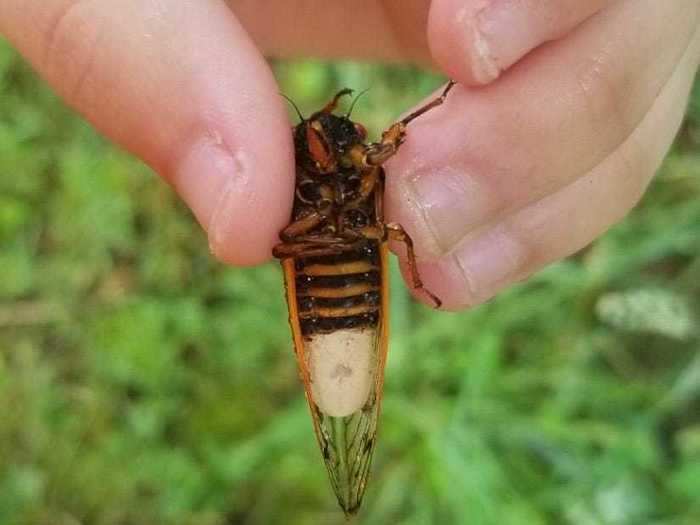
In West Virginia, some cicadas have gotten infected with a fungus called massospora over the last two summers. According to an August study, the fungus manipulates the male cicadas into flicking their wings in a pattern that imitates females' mating invitations. That sham siren call lures in unsuspecting healthy males, who then get infected, too. Once the fungus takes hold, the insects' genitals rot.
Researchers nicknamed the infected bugs "flying salt shakers of death."
Algae can doom animals, too. That turned out to be the reason more than 300 elephants mysteriously died in Botswana between May and September.
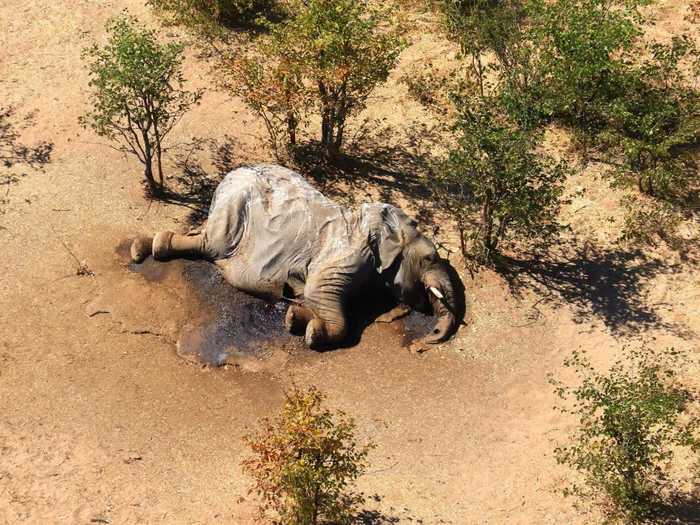
After months of investigation, researchers deduced that the elephants had died because watering holes in the Okavango Delta were contaminated with cyanobacteria.
The blue-green algae's toxins affect both humans and other animals — they can be inhaled or swallowed, or seep through the skin, leading to gastrointestinal problems, paralysis, and even death in dogs, fish, and cattle.
But octopuses have an adaptation that helps warn them if a potential food source is toxic. Special receptors on their tentacles help the sea creatures taste objects by touching them.
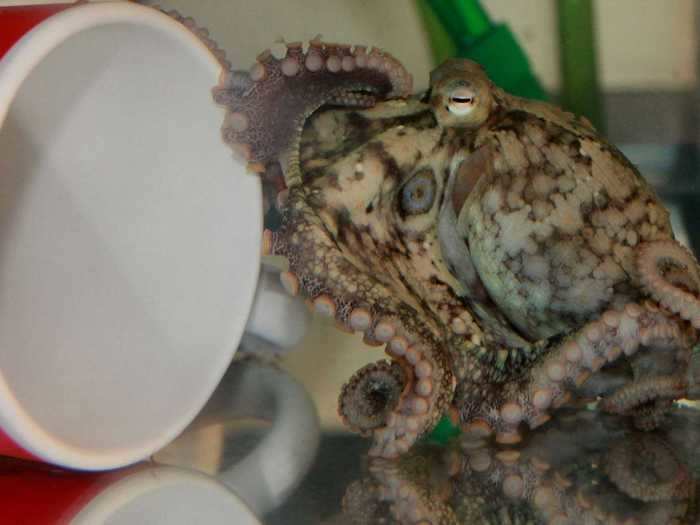
An October study revealed that octopuses explore their prey using their eight arms.
This ability to "taste" through touch enables octopuses to detect hiding prey, and it can also prompt them to retreat from an object that seems toxic. Octopuses can detect bitter-tasting chemicals emitted as a defense or warning signal by marine animals like jellyfish, sponges, mollusks, and crabs.
Slow lorises have toxic bites, scientists discovered. But instead of using venom to hunt prey or fight predators, lorises use their bites to defend their territory.

Lorises typically reserve their venomous bites for attacks on other lorises, according to a study published in October. Their venom packs a nasty punch: It causes extreme pain and rots flesh.
"It causes necrosis, so animals may lose an eye, a scalp or half their face," Anna Nekaris, the lead author of the study, told The New York Times.
Researchers documented white-faced capuchin monkeys in Costa Rica eating a dead infant from their group.
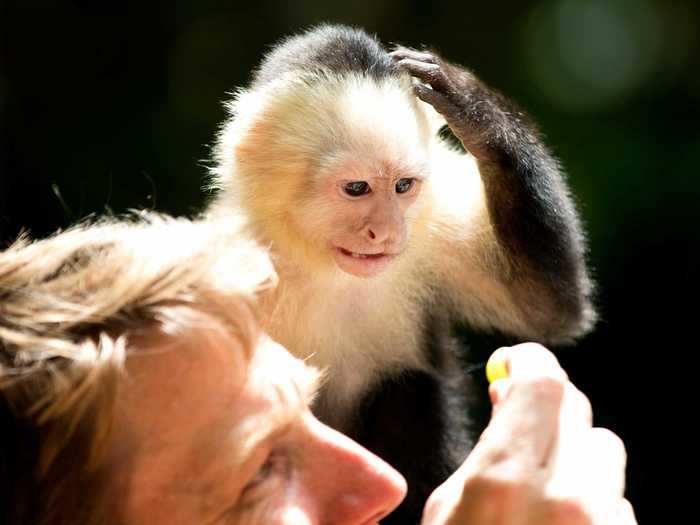
The baby was only 10 days old and had died after falling from a tree, the study authors said. Together, a male and female ate the infant's lower body in half an hour, while the mother watched. Only the baby's head, chest, and arms were left behind.
Other primates, like bonobos, also eat one another, but this incident was the first recorded case of cannibalism among white-faced capuchins.
Not all primate discoveries this year were so grisly. Researchers also found that chimpanzees get choosier about friendships as they age, just like humans.
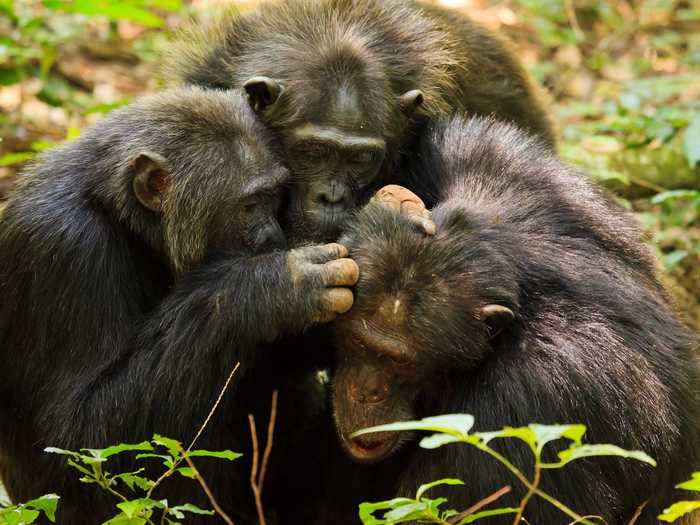
Humans tend to cultivate fewer, more meaningful friendships as they grow older. A prevailing psychological theory suggests this is because we recognize our impending mortality and seek to prioritize fulfilling connections in the time we have left.
Chimps, it turns out, do the same thing — but probably not because they understand their own mortality, the study authors wrote. Their changing friendship priorities might simply come about because their behavior becomes less aggressive over time.
READ MORE ARTICLES ON
Popular Right Now
Popular Keywords
Advertisement